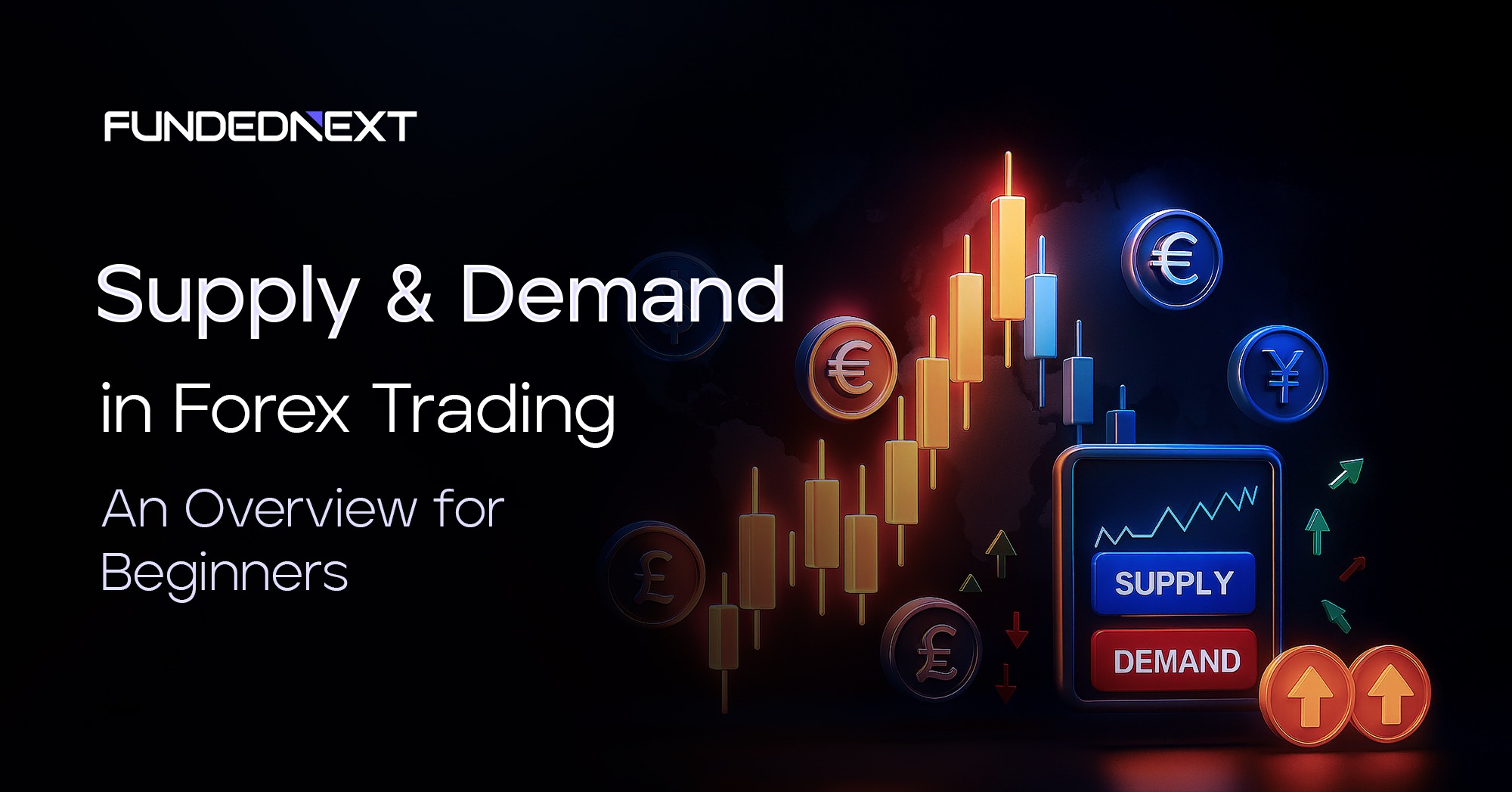
Table of Contents
Ever wondered what makes currency prices dance up and down in the forex market? The secret lies in two powerful forces: supply and demand.
Being a successful Forex trader is dependent upon learning how the supply of and demand for foreign currencies affects forex trading on a general level. So that is what we will focus on in this blog.
We’ll also provide helpful information on how to read Forex supply and demand charts. Finally, we’ll help you learn how to apply this understanding to develop a forex demand and supply strategy for trading.
The Fundamentals of Supply & Demand
Supply and demand is a basic economic concept that drives all markets, including the forex market.
According to the law of supply and demand, “in any market transaction between a seller and a buyer, the price of the good or service is determined by supply and demand in a market”.
Demand and supply curves can be illustrated on a graph, with prices on the vertical axis and quantities on the horizontal axis.
Typically, the supply curve slopes upward, indicating that as prices increase, suppliers are willing to produce more.
The demand curve slopes downward, on the other hand, reflecting that at higher prices, consumers purchase less.
Where the supply and demand curve meet, the quantity demanded equals the quantity supplied. This is considered the “market price” at which a commodity sells.
Understanding Forex Supply and Demand Patterns
In the forex market, supply refers to the amount of a particular currency available. Demand refers to the desire to buy that currency.
Supply and demand are constantly shifting and changing. Depending on how they change, the resulting balance (or imbalance) determines the price of a currency pair.
Understanding how to read and interpret a supply and demand chart in forex trading is, therefore, extremely important.
And doing that requires the ability to differentiate between demand and supply zones in a forex trading chart.
How to Read a Forex Supply & Demand Chart
To read a supply and demand chart, traders need to understand key indicators and tools.
Supply and demand charts visually represent price movements and highlight areas where supply and demand levels are significant with red and green “candlesticks”.
These candlesticks converge or diverge in common patterns, such as consolidation zones, breakouts, and reversals according to factors that impact supply and demand, such as market sentiment, geopolitical events, economic indicators like GDP and employment rates, monetary policy changes, and more.
When reading supply and demand charts, supply zones occur where supply exceeds demand, leading to potential price falls, and demand zones occur where demand exceeds supply, leading to potential price rises.
Some of the best forex pairs for supply and demand strategy include EUR/USD, GBP/USD, and USD/JPY, which are known for their liquidity and clear supply and demand patterns.
How Can One Utilize Their Own Forex Demand and Supply Strategy for Trading
Once you know your way around a forex supply and demand chart and can differentiate a breakout from a demand zone from a breakdown from a supply zone, it’s time to strategize.
After all, reading a forex supply and demand chart tells you what is happening, but not necessarily why or what to do about it.
Applying what you learn to make actual trading decisions is perhaps the most difficult part of forex trading, not to mention the riskiest.
What’s more, traders often combine supply and demand analysis with volume analysis. In forex trading, volume refers to the amount of currency traded during a given time period.
The timeframe you choose for your analysis depends on your trading style. For instance, most day traders choose to focus on shorter timeframes like 15-minute or hourly charts. But swing traders might prefer a much longer time horizon, so they’d be looking at daily or weekly charts to capture broader trends.
Here is a more concise step-by-step guide to devising and implementing your own trading strategy in the markets:
- Identify Supply and Demand Zones: Utilize technical analysis tools on your forex charts to locate potential supply and demand zones. Focus on areas where the price has historically reversed or paused.
- Confirm with Volume: Evaluate trading volume to verify the validity of these zones. High volume during price reversals indicates a strong zone.
- Determine Entry and Exit Points: Base your trades on the identified zones. Consider buying near demand zones and selling near supply zones.
- Set Stop-Loss Orders: Always implement stop-loss orders to safeguard your capital if the market moves against your prediction.
- Manage Your Risk: Limit your risk to a small percentage of your trading capital on any single trade.
Check out more forex trading tips here.
Master Forex Trading Concepts
As you can easily begin to see, forex trading is complex and requires not only the ability to master reading and interpreting forex charts and common supply/demand patterns you see on them, but also an ability to interpret what you see on these charts to then make trading decisions.
Making savvy data-driven decisions can result in great financial gain. But it also carries a high degree of financial risk, as is the case with any investment activity. Therefore, it’s important to develop the knowledge required to do this not just expertly, but also quickly. This is where prop trading can be especially helpful.
The Stellar Challenge at FundedNext is the perfect starting point for forex beginners. Achieve your goal in 2 phases with very realistic profit targets to start trading. Learn more and sign up now.


